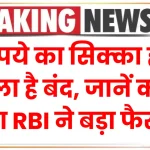
Are you planning to invest for 15 years but unsure whether to choose between Sukanya Samriddhi Yojana (SSY) or Public Provident Fund (PPF)? You are not alone. Many individuals, especially parents and young professionals, often face this dilemma when aiming for safe, long-term, and tax-saving investment options backed by the government.
Both SSY and PPF are excellent schemes, offering guaranteed returns, tax benefits, and the safety of government support. However, knowing which scheme will give more benefits over 15 years requires a deeper look at their features, returns, and flexibility.
SSY vs PPF for 15-Year Investment Plan
| Feature | Sukanya Samriddhi Yojana (SSY) | Public Provident Fund (PPF) |
|---|---|---|
| Eligibility | Girl child (below 10 years) + parents/guardians | Any Indian citizen (including minors) |
| Current Interest Rate (2024-25) | 8.2% p.a. (compounded annually) | 7.1% p.a. (compounded annually) |
| Investment Tenure | 21 years (only 15 years of deposit required) | 15 years (extendable in blocks of 5 years) |
| Minimum Annual Investment | ₹250 | ₹500 |
| Maximum Annual Investment | ₹1.5 lakh | ₹1.5 lakh |
| Tax Benefits | Section 80C deduction; Interest & maturity amount tax-free | Section 80C deduction; Interest & maturity amount tax-free |
| Partial Withdrawals | Allowed after girl turns 18 (up to 50% for education/marriage) | Allowed after 7 years |
If you are specifically saving for your daughter’s education or marriage, Sukanya Samriddhi Yojana (SSY) is the clear winner with its higher returns and focused benefits. However, if you want flexibility, liquidity, and a reliable long-term savings tool, Public Provident Fund (PPF) is an excellent choice.
Understanding Sukanya Samriddhi Yojana (SSY)
What is SSY?
The Sukanya Samriddhi Yojana (SSY) is a government savings scheme launched under the “Beti Bachao, Beti Padhao” initiative. It is exclusively designed for parents or guardians to save for their girl child’s future education and marriage expenses.
Key Features of SSY:
- Eligibility: Only for girl children below the age of 10. Account can be opened by parents/legal guardians.
- Interest Rate: As of 2024, SSY offers an attractive 8.2% p.a., compounded annually.
- Deposit Period: Deposits required for 15 years. The account matures after 21 years.
- Minimum & Maximum Deposits: Minimum ₹250 per year; maximum ₹1.5 lakh per year.
- Tax Benefits: Investments qualify for deductions under Section 80C. Interest earned and maturity proceeds are tax-free.
- Partial Withdrawal: Allowed when the girl turns 18 years for education/marriage (up to 50% of balance).
Example:
If you invest ₹1.5 lakh per year for 15 years in SSY at 8.2% interest, you may accumulate around ₹65-70 lakh by maturity, making it ideal for securing your daughter’s future expenses.
see also: Invest in HDFC Bank Under Senior Citizen Savings Scheme
Understanding Public Provident Fund (PPF)
What is PPF?
The Public Provident Fund (PPF) is one of India’s most popular long-term savings schemes, open to all Indian citizens. It is known for guaranteed returns, tax benefits, and flexibility.
Key Features of PPF:
- Eligibility: Available to any Indian citizen, including minors.
- Interest Rate: Currently at 7.1% p.a., compounded annually (subject to quarterly revisions by the government).
- Tenure: Fixed at 15 years, with an option to extend in blocks of 5 years.
- Minimum & Maximum Deposits: Minimum ₹500 per year; maximum ₹1.5 lakh per year.
- Tax Benefits: Investments eligible for Section 80C deductions; interest & maturity proceeds are tax-free.
- Partial Withdrawals: Allowed after 7 years for emergencies.
Example:
If you invest ₹1.5 lakh annually for 15 years at 7.1% interest, your corpus may grow to around ₹40-42 lakh at maturity.
SSY vs PPF: Detailed Comparison for 15-Year Investment
1. Interest Rate Advantage
- SSY currently offers 8.2%, higher than PPF’s 7.1%.
- Over 15 years, the difference of 1.1% per annum can result in a significant gap in the final corpus.
2. Eligibility & Purpose
- SSY: Strictly for the girl child’s welfare, and only parents/guardians can open it.
- PPF: Open to any Indian individual, making it suitable for general savings goals like retirement, emergency funds, or child’s education.
3. Tenure & Flexibility
- PPF: Offers flexibility by allowing extensions in 5-year blocks after 15 years.
- SSY: Fixed maturity of 21 years, even though deposits stop after 15 years.
4. Liquidity & Withdrawals
- PPF: Partial withdrawals after 7 years.
- SSY: Withdrawal allowed only after the girl turns 18.
5. Tax Benefits
Both schemes fall under the EEE (Exempt-Exempt-Exempt) category:
- Investments: Deduction under Section 80C (up to ₹1.5 lakh).
- Interest Earned: Tax-free.
- Maturity Proceeds: Tax-free.
see also: How Much You Get by Depositing ₹500 to ₹6,000 in PPF Scheme
Which Scheme is Better for You?
| Investor Profile | Recommended Scheme |
|---|---|
| Parents with a daughter under 10 | Sukanya Samriddhi Yojana (SSY) due to higher returns and child-centric goal |
| Individual looking for general savings | Public Provident Fund (PPF) due to flexibility & broader applicability |
| Investor prioritizing higher returns | SSY (if eligible), else PPF with extension option |
| Retirement planning | PPF for stability, flexibility, and long-term compounding |
SSY vs PPF FAQs
1. Can I invest in both SSY and PPF simultaneously?
Yes, absolutely! You can invest in both schemes and claim tax benefits under Section 80C (subject to a combined ₹1.5 lakh limit).
2. What happens if I stop depositing in SSY or PPF?
- SSY: Account will become inactive. A penalty of ₹50/year + minimum deposit needs to be paid to reactivate.
- PPF: Similar rule. Penalty of ₹50/year + minimum deposit required to reactivate.
3. Can NRIs invest in SSY or PPF?
No. NRIs are not eligible to open or continue contributions in PPF or SSY accounts.
4. What are the risks involved?
Both SSY and PPF are risk-free as they are government-backed schemes with guaranteed returns.
5. Which scheme has a higher maturity corpus?
Given the higher interest rate, SSY tends to accumulate more corpus over 15 years compared to PPF, provided you’re eligible to invest in SSY.












0 thoughts on “SSY vs PPF: Which Government Scheme is Better for a 15-Year Investment Plan?”